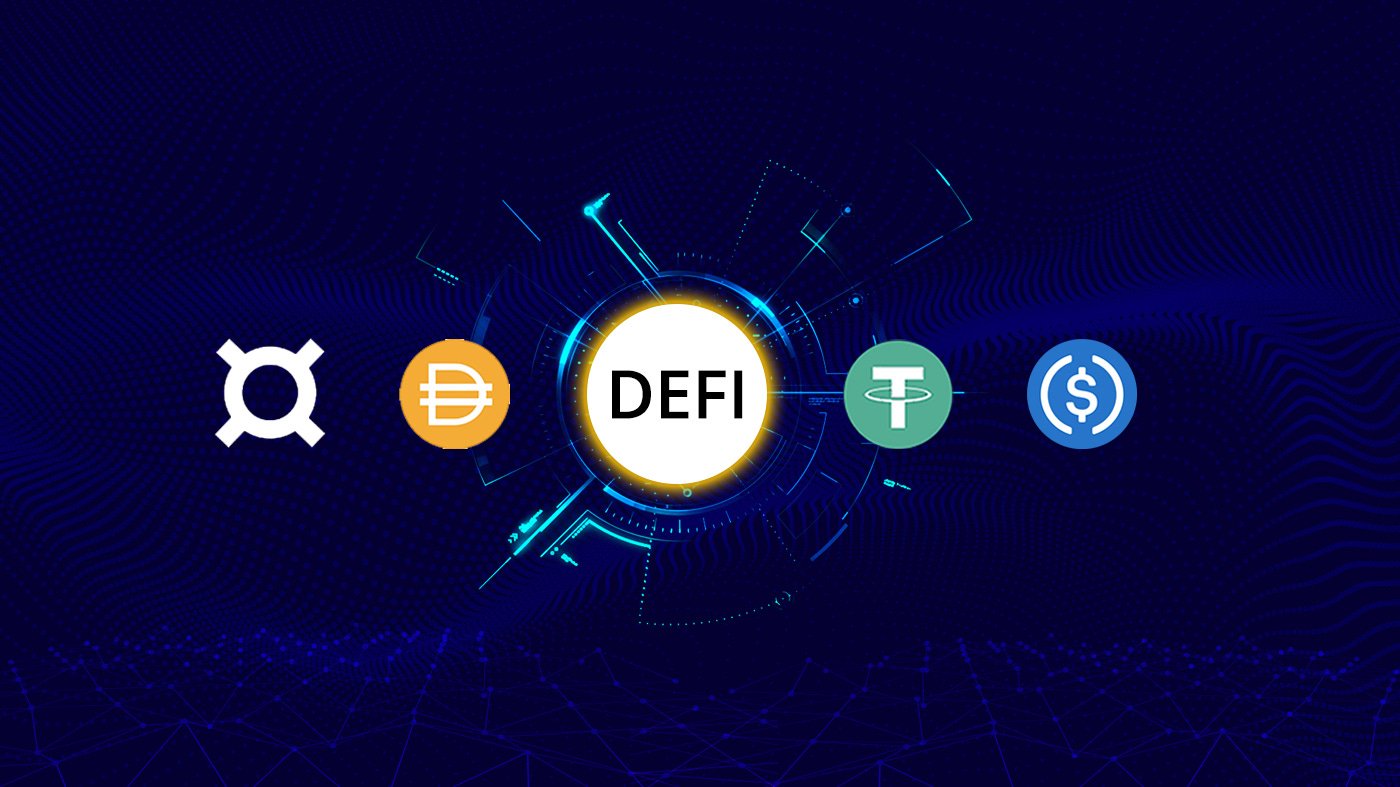Decentralised Finance (DeFi) has revolutionised the world of cryptocurrency, opening up opportunities for users to earn high returns on their digital assets. One of the most appealing aspects of DeFi is the ability to earn passive income, especially through stablecoins. Stablecoins, which are digital currencies pegged to the value of real-world assets like the US Dollar, provide stability in a volatile market. In the DeFi ecosystem, stablecoins have become a cornerstone for earning yield, attracting investors looking for safer, predictable returns.
The best DeFi stablecoin yield strategies allow users to grow their assets without the risk of drastic value fluctuations. As the demand for decentralised financial products increases, so does the need for efficient platforms offering the best stablecoin yield. This article will explore how to maximise returns with the most reliable DeFi platforms and highlight the best stablecoins for earning yield in 2025.
What Are DeFi Stablecoins
Before diving into yield opportunities, it’s essential to understand what DeFi stablecoins are and how they differ from other types of cryptocurrencies. Stablecoins are cryptocurrencies designed to minimise the price volatility that is characteristic of other cryptocurrencies like Bitcoin or Ethereum. They achieve this by being pegged to a stable asset, typically a fiat currency like the US Dollar. The two main types of stablecoins are:
Fiat-collateralised stablecoins these are backed by real-world assets, such as USD. Examples include USDT (Tether), USDC (USD Coin), and DAI. Crypto-collateralised stablecoins: These are backed by other cryptocurrencies, such as Ethereum, and are over-collateralised to maintain their peg.
In the context of DeFi, these stablecoins are crucial for lending, borrowing, and staking activities. They offer stability, which is important for users looking to earn interest or yield on their holdings without worrying about market fluctuations.
How Do DeFi Stablecoins Yield Work
DeFi stablecoin yield opportunities work through decentralised protocols and platforms. These platforms allow users to deposit their stablecoins into liquidity pools or lending protocols, where they can earn returns based on the platform’s interest rates or yield farming rewards. These platforms often operate without intermediaries, such as banks or brokers, providing a decentralised alternative to traditional financial services.
Stablecoin yield generation typically happens in two primary ways
Lending Platforms: In these protocols, users can lend their stablecoins to borrowers in exchange for an interest rate. Lending DeFi protocols like Aave, Compound, and MakerDAO allow users to earn interest on their deposits, with the interest rates fluctuating based on supply and demand dynamics within the platform.
Liquidity Pools: Many DeFi platforms, such as Uniswap or Sushiswap, offer liquidity pools where users provide liquidity in the form of stablecoins in exchange for a share of transaction fees and other incentives. Yield farming, where users stake stablecoins in liquidity pools to earn rewards, is one of the most popular ways to earn passive income.
The Best DeFi Stablecoin Yield Platforms in 2025

Now that we understand the basic principles of DeFi stablecoin yield generation, let’s explore the platforms that offer the best stablecoin yield in 2025. These platforms combine high security, competitive interest rates, and liquidity options that cater to various investor preferences.
Aave: A Leader in DeFi Lending
Aave is one of the most popular DeFi lending platforms. With Aave, users can deposit their stablecoins into liquidity pools and earn interest from borrowers. Aave supports a wide range of stablecoins, including USDT, USDC, and DAI, providing users with diverse options to grow their holdings. Aave is known for its security and transparency, as it operates on the Ethereum blockchain, which is one of the most widely trusted networks in the crypto space.
The best DeFi stablecoin yield on Aave depends on the demand for loans in the protocol. Interest rates on stablecoins vary, but Aave generally offers competitive rates compared to traditional financial products.
Compound: Decentralized Lending with High Returns
Another leader in the DeFi lending space is Compound. Compound allows users to deposit stablecoins like USDC and DAI into liquidity pools and earn compounding interest over time. The protocol adjusts interest rates algorithmically based on the supply and demand for different assets.
Compound has built a solid reputation in the DeFi ecosystem, offering high liquidity and consistently strong yields on stablecoins. It is a go-to platform for users looking for secure, decentralized lending and competitive stablecoin returns.
Yearn finance: Automated Yield Farming
Finance is a DeFi protocol designed to automate the yield farming process, making it easier for users to maximise their returns without actively managing their investments. Yearn.finance aggregates different DeFi platforms to find the highest-yielding opportunities for stablecoin holders.
One of the standout features of Yearn finance is its automated strategies, which optimise the yield farming process by automatically moving stablecoins between platforms that offer the best returns. This eliminates the need for manual intervention, making it ideal for both beginners and experienced investors.
MakerDAO: The DeFi King of Collateralised Lending
MakerDAO is a decentralised autonomous organisation that enables the creation of the DAI stablecoin. Through the MakerDAO system, users can lock up their collateral (such as ETH) in exchange for DAI stablecoins, which they can then use to earn yield. MakerDAO allows users to earn passive income by providing liquidity to various DeFi protocols.
The beauty of MakerDAO is its stablecoin creation model, which maintains the peg of DAI through an over-collateralised system. This ensures that users can consistently earn yield while maintaining the stability of their holdings.
Read Also: Most Advanced DeFi Protocols 2025 Guide to What’s Next
Maximising Yield on DeFi Stablecoins: Tips and Best Practices

While there are plenty of DeFi platforms offering high yields on stablecoins, maximising your returns requires careful strategy. Here are some tips to ensure you’re getting the best DeFi stablecoin yield:
Diversify Across Platforms
One of the best ways to maximise your yield is by diversifying your stablecoin holdings across multiple DeFi platforms. Different platforms offer varying interest rates and reward mechanisms. By spreading your stablecoins across platforms like Aave, Compound, and Yearn.In finance, you can take advantage of different yield opportunities and reduce the risk of platform-specific issues.
Choose the Right Stablecoins
Not all stablecoins are created equal. Some stablecoins may offer higher yields but come with greater risks or higher fees. For example, DAI is often favoured for its decentralised nature, but USDC and USDT may provide more stable yields in the short term. It’s important to research which stablecoin offers the best balance of yield, security, and liquidity for your specific goals.
Monitor Fees and Costs
When choosing a DeFi platform, it’s important to account for the associated fees. Gas fees on Ethereum-based platforms can eat into your profits, especially for smaller deposits. Consider using Layer 2 solutions like Optimism or Arbitrum to lower transaction costs and maximise your returns.
Risks Associated with DeFi Stablecoin Yield
While DeFi stablecoin yield opportunities can be lucrative, they are not without risks. Some of the key risks to consider include:
Smart Contract Vulnerabilities
DeFi platforms are built on smart contracts, which are lines of code that govern how the protocol works. These contracts can be vulnerable to bugs or hacking attempts, which may lead to the loss of funds. It’s crucial to choose platforms that undergo regular security audits to mitigate this risk.
Market and Liquidity Risks
Although stablecoins are less volatile than other cryptocurrencies, they are not completely immune to market fluctuations. Additionally, liquidity risks can arise if the platform you use experiences a shortage of funds or high withdrawal demand.
Conclusion
DeFi stablecoin yield strategies offer exciting opportunities for users to earn passive income on their digital assets. With a wide range of platforms and stablecoin options available, the potential to maximise returns is greater than ever. By choosing the right platforms, diversifying your holdings, and staying informed about market conditions, you can make the most out of your DeFi stablecoin investments.
In 2025, DeFi continues to be a rapidly evolving space, and those who are proactive in exploring new platforms and strategies will be well-positioned to earn the best DeFi stablecoin yield. As with any investment, it’s important to understand the risks and rewards before diving in. Stay informed, make wise choices, and watch your crypto holdings grow.
FAQs
What is the best DeFi stablecoin to earn yield on?
The best DeFi stablecoin depends on factors like interest rates, platform security, and liquidity. Popular stablecoins for earning yield include USDC, DAI, and USDT.
How can I maximise my stablecoin yield in DeFi?
To maximise stablecoin yield, diversify across multiple DeFi platforms, monitor gas fees, and select stablecoins with the best returns and lowest risks.
Are DeFi stablecoin yield platforms safe?
DeFi platforms come with risks, including smart contract vulnerabilities and market fluctuations. However, using reputable platforms with strong security measures can reduce these risks.
Can I lose money in DeFi stablecoin yield farming?
Yes, there are risks involved, including the potential for smart contract exploits and liquidity issues. It’s important to do thorough research before investing.
What are liquidity pools in DeFi?
Liquidity pools are pools of digital assets provided by users to facilitate trading on decentralized exchanges. Users who provide liquidity to these pools earn rewards, often in the form of transaction fees and yield farming incentives.


